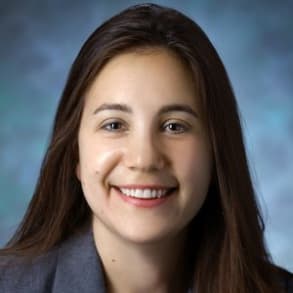Johns Hopkins’ Babitha Haridas, pediatric epileptologist and Sarah Kelley, director of the pediatric epilepsy monitoring unit, discuss their presentation about common seizure types and paroxysmal nonepileptic events in children at the 2023 American Academy of Pediatrics National Conference & Exhibition. During the presentation, they discussed key strategies to help differentiate seizures from nonepileptic events, which is vital to patient care.
Hello, my name is Doctor Sarah Kelly and I am an Associate Professor of Clinical Neurology here at Johns Hopkins. My name is Doctor Babita Harris and I am an assistant professor in the Department of Neurology here at Johns Hopkins. We gave this talk at the American Academy of Pediatrics annual meeting on common seizure types and paroxysmal non epileptic events in Children, paroxysmal events can be anxiety provoking to parents and confusing to clinicians, both neurologists and non neurologists. Accurate diagnosis is key to instituting the correct treatment regimen and may affect a child's growth and development and provide appropriate parental reassurance. Around one in 10 people will have a seizure at some point in their lifetime. One in 26 will have a diagnosis of epilepsy. So those numbers may seem high. There are numerous benign conditions such as ticks and stereos that are much more common in our talk. We reviewed key strategies to help differentiate seizures from non epileptic events. This starts with a thorough history of the events of concern including the child's appearance prior to during and after the episode. The differential diagnosis of the ideology of these events vary by age, some studies of neonates with unusual spells have found that 90% were not seizures. In our talk. We reviewed key points to identifying patients in whom these spells are likely to be epileptic. One of the seizure types that we are concerned about in the first year of life are infantile spasms. The new terminology is infantile epileptic spasm syndrome. This epileptic encephalopathy often leads to developmental delay and ongoing seizures. Data shows that early diagnosis and treatment is important to improving outcome. However, there are mimickers of this syndrome which we discussed in our talk in older Children. Non epileptic events may manifest with varied semiologist and may seem like seizures but in actuality may be psychogenic non epileptic events. This condition is now known as functional neurological symptom disorder. These are movements that can look like epileptic seizures but are not caused by abnormal electrical activity in the brain, early diagnosis and initiation of appropriate psychiatric care, which often includes cognitive behavioral therapy may help reduce unnecessary emergency department visits and hospitalizations. Differentiating between epileptic and non epileptic events is vital to patient care. But how do we do this a thorough history and eeg where appropriate are mainstays of diagnosis. However, often home videos can be most helpful when in doubt an admission to the epilepsy monitoring unit where events can be captured while on EEG can be conclusive and point the provider and family in the direction of appropriate care. We would like to thank you. For joining us today. We hope you have a great rest of your day.




